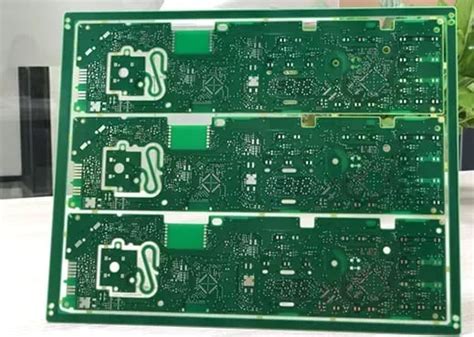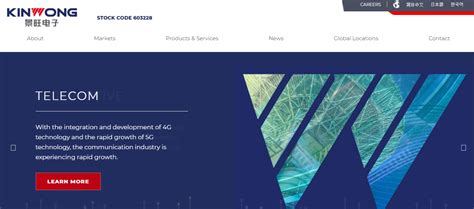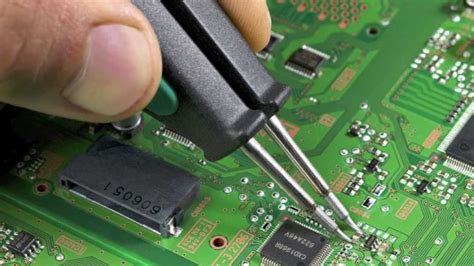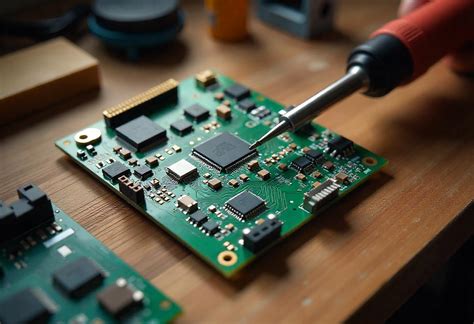s Top PCB Manufacturers: North America & USA Guide

Key Takeaways
When evaluating PCB manufacturing partners in North America, you’ll find that balancing quality, cost, and intellectual property (IP) security is critical. Domestic PCB manufacturing companies often prioritize tighter quality controls and faster turnaround times compared to overseas suppliers, though PCB manufacturing cost may be higher. For instance, U.S.-based fabricators typically adhere to stricter compliance standards (e.g., ITAR, ISO 9001), which ensures reliability for industries like aerospace or medical devices.
Here’s a quick comparison of key factors to consider:
| Factor | Domestic PCB Manufacturing | Overseas PCB Manufacturing |
|---|---|---|
| Average Cost | 20-30% higher | Lower base rates |
| Lead Time | 2-4 weeks | 6-12 weeks |
| IP Protection | Robust legal safeguards | Variable enforcement |
| Customization | High flexibility | Limited options |
While overseas options might reduce PCB manufacturing business expenses, domestic production minimizes risks like supply chain delays or compromised designs. Companies like TTM Technologies excel in high-volume, precision-driven projects, whereas OSH Park caters to prototyping with competitive pricing. Ultimately, your choice hinges on whether speed, security, or scalability aligns best with your project’s priorities.

Top PCB Manufacturers in North America
When selecting PCB manufacturing partners in North America, you’ll find a mix of established corporations and specialized firms balancing innovation with reliability. Companies like TTM Technologies dominate high-volume production for aerospace and defense sectors, while OSH Park caters to prototyping needs with rapid turnaround times. These PCB manufacturing companies prioritize adherence to IPC-6012 and AS9100 standards, ensuring consistent quality for critical applications.
A key advantage of working with domestic suppliers is transparency in PCB manufacturing cost structures. While initial quotes may exceed overseas options, you avoid hidden expenses like import tariffs or shipping delays. For businesses handling sensitive intellectual property, North American PCB manufacturing business operations often include NDAs and cybersecurity protocols, reducing risks of data breaches.
Tip: Always verify a fabricator’s ITAR compliance if your project involves government or military contracts—this ensures adherence to strict regulatory requirements.
Regional manufacturers also excel in traceability, a critical factor for industries like medical devices or automotive electronics. By leveraging IPC-certified processes, they minimize defects and provide detailed documentation for audits. Whether you prioritize speed, scalability, or security, evaluating local partners against these criteria helps align your project with the right expertise.

US PCB Suppliers: Quality vs Cost
When evaluating PCB manufacturing options in the US, balancing quality and cost requires careful analysis. Domestic PCB manufacturing companies often prioritize advanced technologies and rigorous quality control, ensuring compliance with industry standards like IPC-A-600. However, this focus on precision can lead to higher PCB manufacturing cost compared to overseas alternatives. For example, US-based suppliers typically invest in specialized materials and automated testing systems, which reduce defects but add to production expenses.
That said, opting for local PCB manufacturing business partnerships minimizes risks like shipping delays or communication gaps—common pain points when sourcing abroad. While upfront costs might be 20-30% higher, long-term savings emerge through faster turnaround times, reduced rework, and stronger intellectual property safeguards. Companies like TTM Technologies and Sanmina highlight this balance, offering tiered pricing models that align with project complexity.
Still, budget constraints remain a key consideration. If your design allows for standardized processes, some North American fabricators provide cost-competitive prototyping services without compromising reliability. This becomes critical when scaling from prototypes to mass production, where consistency in PCB manufacturing directly impacts product performance. By weighing these factors early, you can optimize both technical and financial outcomes.
Domestic PCB Manufacturing IP Protection
When selecting PCB manufacturing partners, safeguarding intellectual property (IP) becomes critical—especially for projects involving proprietary designs or sensitive technology. North American PCB manufacturing companies often operate under stricter regulatory frameworks, ensuring compliance with U.S. patent laws and export control regulations. This reduces risks of IP theft or unauthorized replication, which can occur when outsourcing to regions with weaker enforcement.
Domestic facilities typically implement multilayer security protocols, including encrypted design transfers, restricted facility access, and NDAs tailored to the PCB manufacturing business. While PCB manufacturing cost may be higher compared to overseas options, the added expense often reflects investments in cybersecurity and legal safeguards that protect your designs. For startups or enterprises scaling production, partnering with local manufacturers minimizes exposure to supply chain vulnerabilities while maintaining control over R&D assets.
However, verifying a supplier’s IP policies is essential. Look for certifications like ITAR registration or ISO 27001, which signal adherence to industry-best practices. By prioritizing domestic PCB manufacturing, you align operational security with long-term innovation goals—a balance that strengthens competitiveness without compromising confidentiality.

Leading USA PCB Reliability Rankings
When evaluating PCB manufacturing companies in the U.S., reliability often becomes the defining factor for industries like aerospace, medical devices, and defense. Domestic manufacturers prioritize rigorous testing protocols—such as thermal cycling, signal integrity analysis, and accelerated life testing—to ensure boards withstand extreme conditions. For example, companies like TTM Technologies integrate MIL-PRF-31032 and IPC-6012 standards, aligning with military-grade requirements.
Higher PCB manufacturing costs in the U.S. often correlate with advanced quality assurance systems. Automated optical inspection (AOI) and X-ray testing minimize defects, reducing long-term risks of field failures. While overseas options might offer lower upfront expenses, domestic PCB manufacturing reduces supply chain disruptions and ensures compliance with ITAR or NIST regulations, critical for sensitive applications.
Reliability rankings also consider material traceability and certifications. U.S.-based PCB manufacturing businesses typically source substrates from vetted suppliers, ensuring consistency in dielectric properties and thermal performance. This focus on transparency not only strengthens product longevity but also safeguards intellectual property—a key advantage for startups and established firms alike. By prioritizing reliability, you secure a foundation for innovation without compromising operational stability.

OSH Park vs TTM Technologies Review
When evaluating PCB manufacturing companies for your project, comparing providers like OSH Park and TTM Technologies reveals distinct advantages depending on your priorities. OSH Park specializes in low-volume prototyping, offering cost-effective solutions for hobbyists or startups needing quick-turn PCB manufacturing with transparent pricing per square inch. Their signature purple solder mask and community-driven approach make them ideal for experimental designs. However, PCB manufacturing cost scalability becomes a limitation for high-volume orders.
In contrast, TTM Technologies caters to industrial-scale demands, supporting complex multilayer boards and advanced materials for aerospace, medical, or automotive sectors. Their domestic facilities prioritize IP security—a critical factor if your PCB manufacturing business handles proprietary designs. While initial costs are higher, their economies of scale reduce per-unit expenses for bulk orders.
Your choice hinges on balancing speed, precision, and budget. For rapid prototyping without compromising quality, OSH Park’s niche focus delivers value. For mission-critical applications requiring rigorous testing and supply chain reliability, TTM’s infrastructure aligns with enterprise needs. Both underscore the benefits of North American PCB manufacturing companies in minimizing logistical risks compared to overseas alternatives.
Local PCB Production Benefits Explored
When sourcing PCB manufacturing services, opting for domestic production offers distinct advantages that extend beyond immediate PCB manufacturing cost considerations. Proximity to PCB manufacturing companies in North America reduces logistical complexities, enabling faster turnaround times and responsive communication during design iterations. This geographic closeness also minimizes shipping delays and import tariffs, which can erode perceived savings from overseas suppliers.
Domestic PCB manufacturing business operations typically adhere to stricter intellectual property protocols, a critical factor for industries handling sensitive designs. You’ll find tighter controls over data security and compliance with regional regulations, reducing risks of counterfeiting or unauthorized replication. Additionally, local facilities often employ advanced quality assurance processes, ensuring higher consistency in multilayer boards and high-frequency materials compared to some offshore alternatives.
While PCB manufacturing cost might appear lower abroad, hidden expenses—such as rework due to quality issues or delayed product launches—can offset initial savings. By partnering with North American manufacturers, you gain access to real-time collaboration, simplified logistics, and alignment with sustainability standards increasingly prioritized in global supply chains. This balance of reliability, compliance, and operational efficiency makes domestic production a strategic choice for businesses prioritizing long-term stability over short-term cost reductions.
Choosing North American PCB Fabricators
When selecting PCB manufacturing partners in North America, you’ll need to balance technical expertise with business priorities. Start by assessing a company’s certifications—ISO 9001 or ITAR compliance often signals adherence to rigorous quality standards, critical for aerospace or defense projects. While PCB manufacturing costs might appear higher domestically compared to overseas alternatives, consider hidden expenses like shipping delays, import tariffs, or intellectual property risks that could offset initial savings.
Look for PCB manufacturing companies that offer transparency in their supply chains, particularly regarding material sourcing and lead times. Many North American fabricators specialize in low-volume, high-mix production—ideal for prototyping or specialized applications—while others focus on cost-optimized scaling. For example, some providers integrate advanced testing protocols like automated optical inspection (AOI) to ensure reliability, which becomes crucial for mission-critical electronics.
Your decision should also factor in communication efficiency. Domestic PCB manufacturing businesses typically provide clearer project management channels, reducing misinterpretations during design iterations. Prioritize vendors that align with your product lifecycle needs, whether that’s rapid turnaround for startups or long-term support for enterprise-scale production. By weighing these elements holistically, you’ll position your project for both technical success and operational resilience.

PCB Costs: Domestic vs Overseas Comparison
When evaluating PCB manufacturing cost, you’ll notice significant differences between domestic and overseas options. While overseas PCB manufacturing companies often offer lower upfront pricing due to economies of scale and reduced labor expenses, hidden factors like shipping delays, import tariffs, and quality control risks can inflate long-term expenses. Domestic PCB manufacturing business operations typically prioritize tighter quality standards and faster turnaround times, which reduce the likelihood of costly redesigns or production halts.
Intellectual property (IP) protection also plays a role. Working with North American suppliers minimizes exposure to counterfeit components or unauthorized design replication—a critical consideration for proprietary projects. However, higher labor and regulatory compliance costs in regions like the U.S. can make domestic PCB manufacturing 20–40% more expensive than overseas alternatives.
Your choice ultimately depends on balancing short-term savings against long-term reliability. For low-volume, non-urgent projects, overseas fabrication might align with budget constraints. For complex designs requiring strict IP security or rapid iterations, domestic partners often justify their premium through reduced risk and faster market readiness.
Conclusion
When evaluating PCB manufacturing options, balancing cost-efficiency with technical reliability remains critical. Opting for PCB manufacturing companies in North America ensures adherence to stringent quality standards while safeguarding intellectual property—a priority for industries requiring sensitive designs. While PCB manufacturing cost may initially appear higher compared to overseas alternatives, long-term benefits like reduced shipping delays, streamlined communication, and compliance with domestic regulations often justify the investment.
For businesses scaling their PCB manufacturing business, partnering with established regional suppliers minimizes supply chain risks and enhances product traceability. Whether prototyping or transitioning to full-scale production, prioritizing manufacturers with proven expertise in advanced materials and precision engineering ensures consistent performance. By aligning your priorities—whether cost, speed, or security—with the strengths of local fabricators, you position your projects for sustainable success in competitive markets.
FAQs
How do North American PCB manufacturing companies ensure intellectual property protection?
Domestic suppliers implement stringent cybersecurity protocols and physical access controls, with many holding ITAR or NIST certifications. This reduces risks associated with offshore PCB manufacturing data transfers.
What drives higher PCB manufacturing cost in the USA compared to Asia?
Labor regulations, environmental compliance, and advanced quality testing account for 20-35% higher initial costs. However, reduced shipping delays and rework rates under 0.5% often offset long-term expenses.
Can local PCB manufacturing business partners accommodate small-batch prototyping?
Yes, 68% of North American fabricators now offer 5-15 day turnaround for prototypes, with some providing 24/7 design support portals to streamline iterations.
How do you evaluate reliability rankings for US-based PCB manufacturing providers?
Review third-party audits (e.g., IPC-6012 Class 3 compliance rates), on-time delivery metrics, and failure analysis reports. Leading firms publish mean time between failures (MTBF) exceeding 250,000 hours.
Ready to Streamline Your PCB Sourcing?
For a curated list of vetted North American PCB manufacturing partners with real-time pricing, please click here to access supplier scorecards and RFQ templates.







